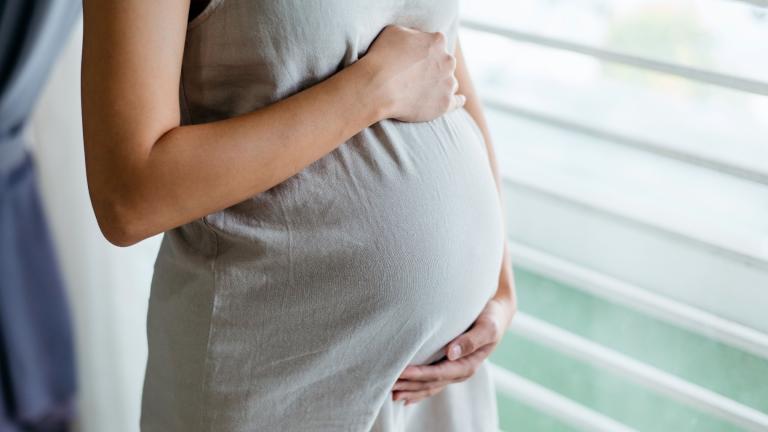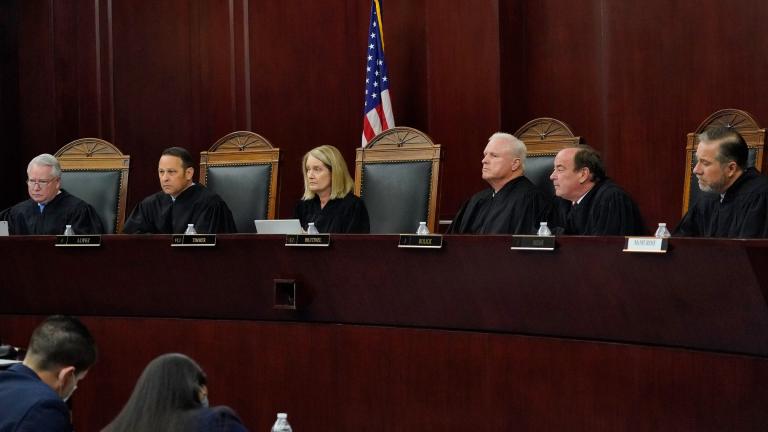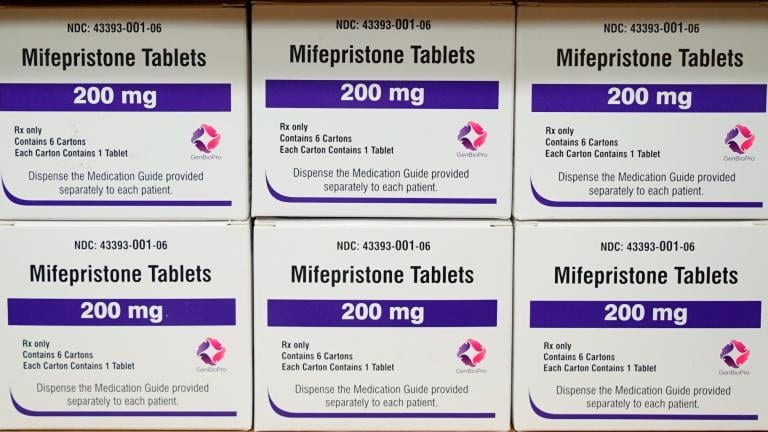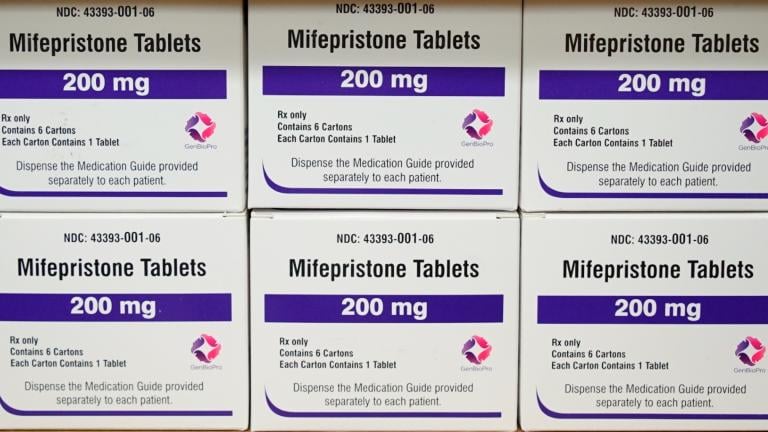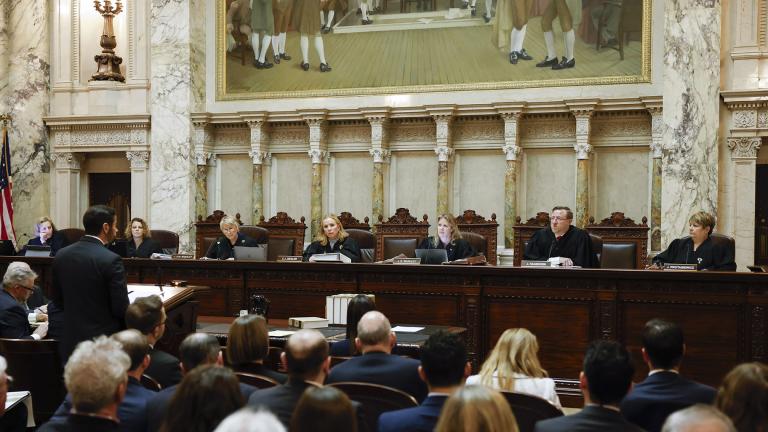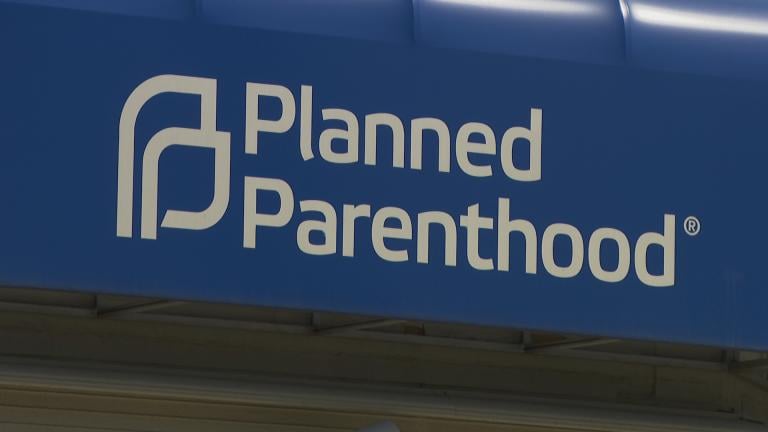Video: Joining “Chicago Tonight” are Colleen Connell, executive director of the American Civil Liberties Union of Illinois, and Peter Breen, executive vice president and head of litigation at the Thomas More Society. (Produced by Paul Caine)
WASHINGTON (AP) — The Supreme Court on Tuesday seemed likely to preserve access to a medication that was used in nearly two-thirds of all abortions in the U.S. last year, in the court’s first abortion case since conservative justices overturned Roe v. Wade two years ago.
In nearly 90 minutes of arguments, a consensus appeared to emerge that the abortion opponents who challenged the FDA’s approval of the medication, mifepristone, and subsequent actions to ease access to it, lack the legal right or standing to sue.
Such a decision would leave in place the current rules that allow patients to receive the drug through the mail, without any need for an in-person visit with a doctor, and to take the medication to induce an abortion through 10 weeks of pregnancy. Should the court take the no-standing route, it would avoid the more politically sensitive aspects of the case.
The high court’s return to the abortion thicket is taking place in a political and regulatory landscape that was reshaped by its abortion decision in 2022 that led many Republican-led states to ban or severely restrict abortion.
Solicitor General Elizabeth Prelogar, the Biden administration’s top Supreme Court lawyer, said the court should dismiss the case and make clear that anti-abortion doctors and organizations don’t “come within 100 miles” of having standing.
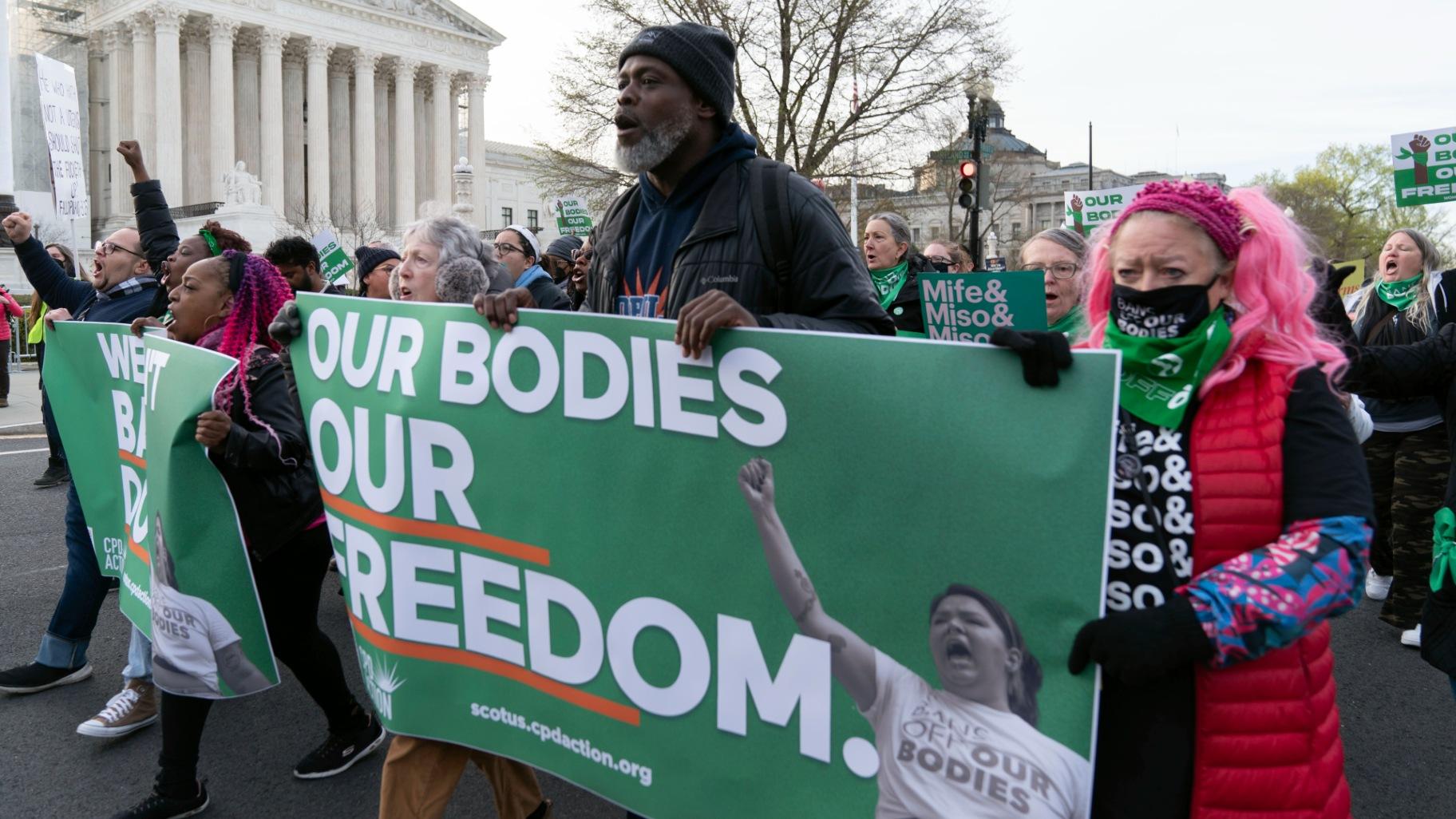 Abortion-rights activists rally outside of the Supreme Court, Tuesday, March 26, 2024, in Washington. (Jose Luis Magana / AP Photo)
Abortion-rights activists rally outside of the Supreme Court, Tuesday, March 26, 2024, in Washington. (Jose Luis Magana / AP Photo)
Even three justices who were in the majority to overturn Roe posed skeptical questions about standing to the lawyer for the abortion opponents. Justices Amy Coney Barrett, Neil Gorsuch and Brett Kavanaugh are former President Donald Trump’s three Supreme Court appointees.
Barrett, for example, seemed to doubt that the doctors identified by lawyer Erin Hawley could show that were actually harmed by the FDA’s actions, one of the requirements for showing standing.
“The difficulty, to me, is that the affidavits do read more like conscience objections,” Barrett said.
Kavanaugh had only one question during the entire session and it too seemed to be focused on the technical issue of standing. He asked Prelogar to confirm that “under federal law, no doctors can be forced against their consciences to perform or assist in an abortion.”
Abortion opponents are asking the justices to ratify a ruling from a conservative federal appeals court that would limit access to mifepristone, one of two drugs used in medication abortions.
That ruling had immediate political consequences, and the outcome in the current case, expected by early summer, could affect races for Congress and the White House.
Another abortion case already is on the docket. Next month, the justices will hear arguments over whether a federal law on emergency treatment at hospitals must include abortions, even in states that have otherwise banned them.
The scene outside the Supreme Court was lively Tuesday morning, with demonstrators occupying the streets surrounding the court and groups on both sides of the issue marching and chanting. The police blocked traffic surrounding the court as well.
The practical consequences of a ruling for abortion opponents would be dramatic, including possibly halting the delivery of mifepristone through the mail and at large pharmacy chains, and ending increasingly popular telehealth visits at which the drug can be prescribed.
President Joe Biden’s administration and drug manufacturers warn that such an outcome also could undermine the FDA’s drug approval process more widely by inviting judges to second-guess the agency’s scientific judgments. The Democratic administration and New York-based Danco Laboratories, which makes mifepristone, say that the drug is among the safest the FDA has ever approved.
Justice Ketanji Brown Jackson, a Biden appointee who joined the court just after the last abortion case, signaled her agreement with some of those arguments when she asked Jessica Ellsworth, Danco’s lawyer. whether she has concerns “about judges parsing medical and scientific studies.”
The abortion opponents argue that the FDA’s decisions in 2016 and 2021 to relax restrictions on getting the drug were unreasonable and, as Hawley wrote in her clients’ main legal brief, “jeopardize women’s health across the nation.” She argued Tuesday that she was asking the court to affirm a ruling that “merely restored long-standing and crucial protections under which millions of women used abortion drugs.” Her husband, Sen. Josh Hawley, R-Missouri, and one of their children were in the courtroom to watch her first arguments.
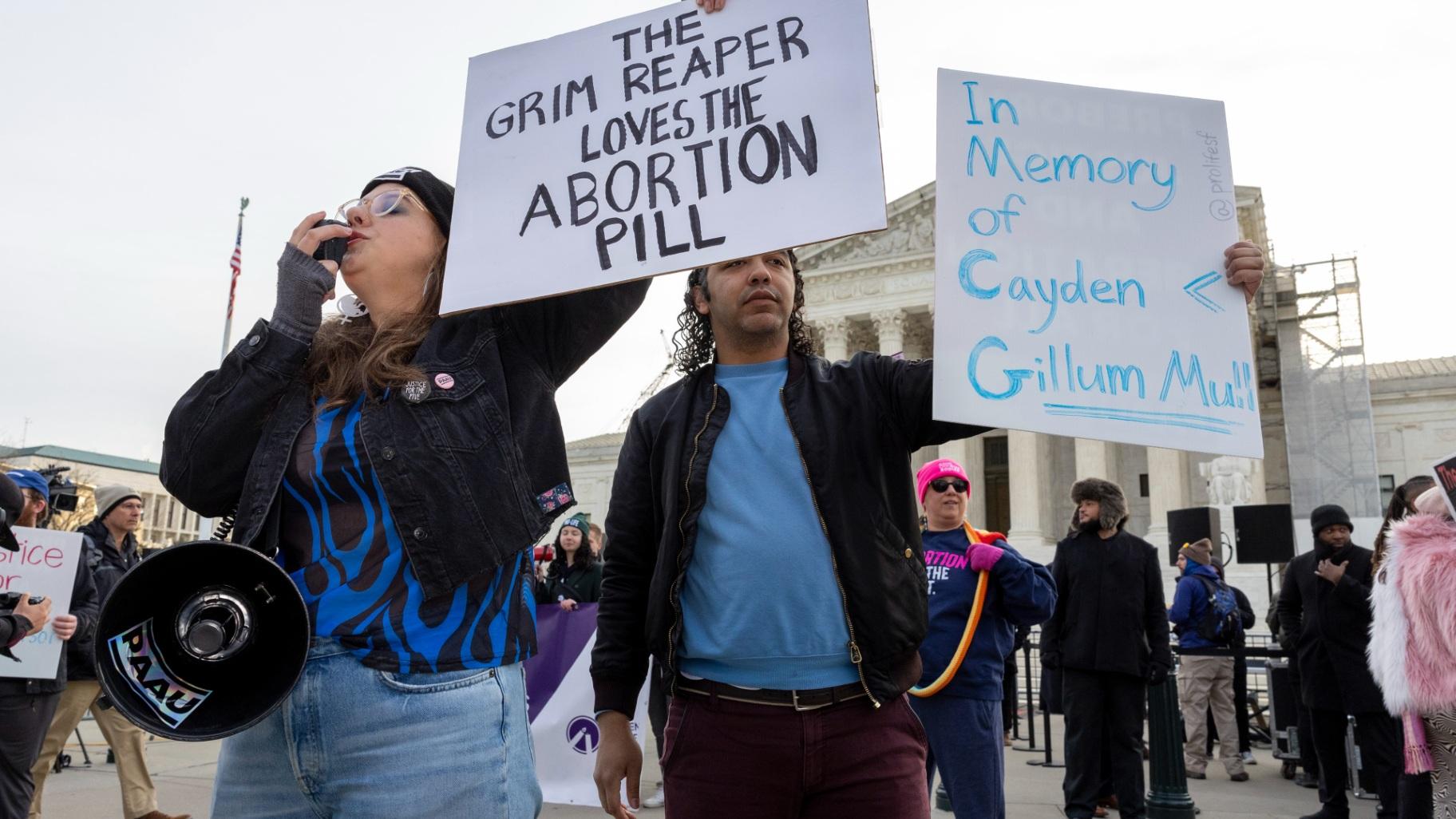 Anti-abortion protestors rally outside the Supreme Court, Tuesday, March 26, 2024, in Washington. (Amanda Andrade-Rhoades / AP Photo)
Anti-abortion protestors rally outside the Supreme Court, Tuesday, March 26, 2024, in Washington. (Amanda Andrade-Rhoades / AP Photo)
The mifepristone case began five months after the Supreme Court overturned Roe v. Wade. Abortion opponents initially won a sweeping ruling nearly a year ago from U.S. District Judge Matthew Kacsmaryk, a Trump nominee in Texas, which would have revoked the drug’s approval entirely. The 5th U.S. Circuit Court of Appeals left intact the FDA’s initial approval of mifepristone. But it would reverse changes regulators made in 2016 and 2021 that eased some conditions for administering the drug.
The Supreme Court put the appeals court’s modified ruling on hold, then agreed to hear the case, though Justices Samuel Alito, the author of the decision overturning Roe, and Clarence Thomas would have allowed some restrictions to take effect while the case proceeded.
In arguments highly focused on technical legal issues, Alito and Thomas asked some of the few questions Tuesday on the substance of the case, including about sending mifepristone through the mail.
They referred to the Comstock Act, a rarely used, 151-year-old criminal law that has been revived by anti-abortion advocates seeking to block the delivery of mifepristone through the U.S. mail. Addressing Ellsworth, Thomas said the law is “fairly broad, and it specifically covers drugs such as yours.”
Even if the court doesn’t address the Comstock Act in its ruling, some abortion rights advocates fear that a future administration that favors abortion restrictions could invoke the law to roll back access to mifepristone.
Mifepristone is one of two drugs, along with misoprostol, used in medication abortions. Their numbers have been rising for years. More than 6 million people have used mifepristone since 2000. Mifepristone is taken first to dilate the cervix and block the hormone progesterone, which is needed to sustain a pregnancy. Misoprostol is taken 24 to 48 hours later, causing the uterus to contract and expel pregnancy tissue.
Health care providers have said that if mifepristone is no longer available or is too hard to obtain, they would switch to using only misoprostol, which is somewhat less effective in ending pregnancies.

